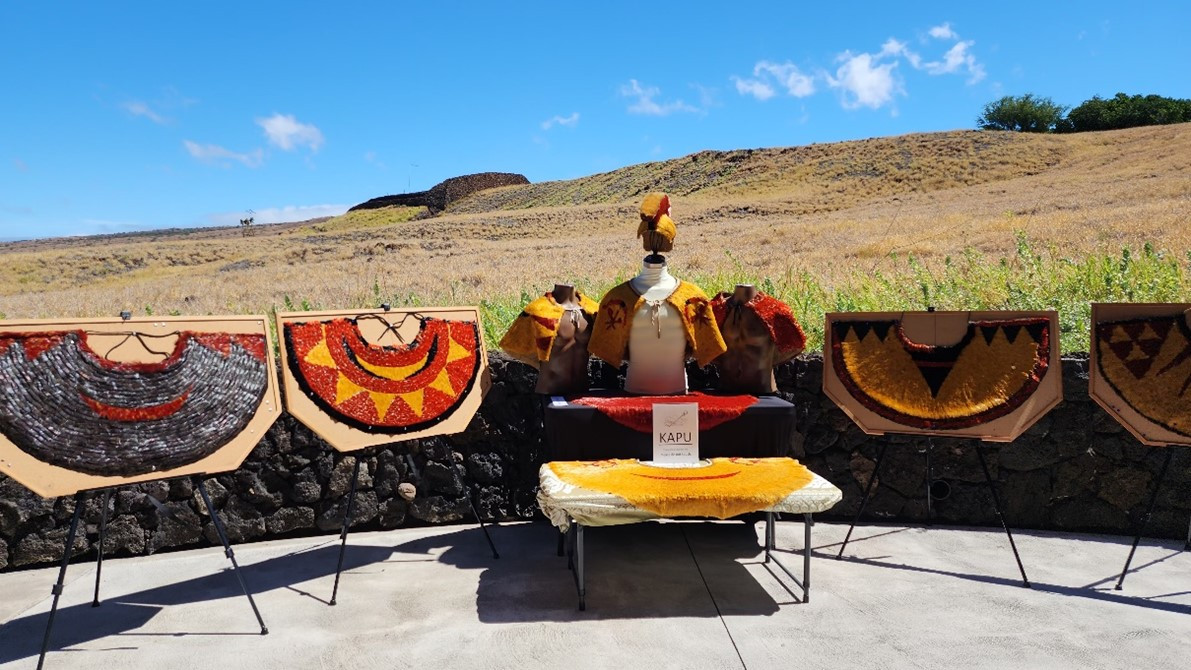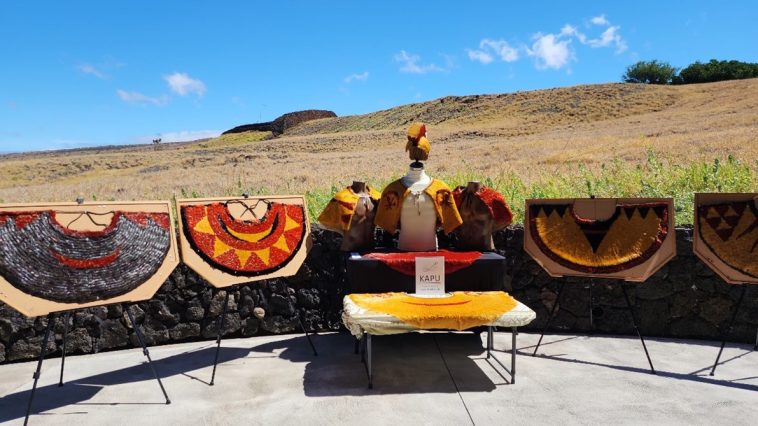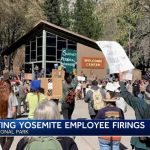
Celebrating Hawaiian Heritage at Puʻukoholā Heiau
The Puʻukoholā Heiau Establishment Day and Hawaiian Cultural Festival offers a captivating glimpse into the cherished traditions of Hawaiʻi’s indigenous people. Held annually on Hawaiʻi Island, this event has grown into a unique celebration of legacy, innovation, and community spirit. As we approach the 53rd anniversary of this landmark occasion, it is hard not to be moved by the vivid imagery and cultural significance that resonates through every activity, performance, and demonstration offered.
This year’s festival, with the evocative theme “Ke Kulana Noʻeau o ka wa Kahiko” and its sub-theme “Eia ke ao, ka lau, la loa, ka muʻo, ka hoʻoilina” – translating to “Here is the present, the future, the everlasting, the continuous growth, the legacy” – invites locals and visitors alike to immerse themselves in authentic Hawaiian traditions while also appreciating the ongoing evolution of cultural heritage.
Puʻukoholā Heiau: A Regal Tribute to Hawaiian Legacy
Few events capture the spirit and pride of Hawaiʻi more than the Puʻukoholā Heiau festival, which has now become a cornerstone in promoting awareness of native history. Its celebration is not just a reminder of the sacred sites scattered across the islands but also a call to preserve and honor traditions through tangible, everyday expressions of art and community unity.
Historically, Puʻukoholā Heiau stands as a testament to the finely tuned cultural practices of ancient Hawaiians. The place carries the weight of history without the tricky parts and tangled issues that modern critics might focus upon. Instead, it serves as a beacon of inspiration where the subtle parts of craftsmanship, storytelling, and community life are celebrated.
Historical Significance & Cultural Resonance
At its core, the festival is a vibrant look back at Hawaiian heritage—a heritage that has been molded over centuries. As we take a closer look at both the small distinctions and the hidden complexities of native traditions, it is evident that this cultural festival enables attendees to step into a living museum where every demonstration, every chant, and every woven thread carries with it the legacy of ancestors.
- Heritage Preservation: The festival plays a key role in preserving traditions that have endured the twists and turns of history.
- Living History: Visitors encounter live demonstrations of art and craft techniques passed down through generations.
- Community Bonding: Community partners, civic clubs, and local volunteers lend their energy and support, creating an atmosphere of shared pride and unity.
The event is not only about looking backward; it makes the case for a seamless connection between the past and the future—a future where these culturally rich practices have a super important place in educating younger generations and inspiring innovation in cultural craftsmanship.
Experiencing Indigenous Hawaiian Crafts and Activities
The festival is a treasure trove of experiences designed to engage and educate. Stretching over two days, the schedule is thoughtfully packed with activities that range from traditional bamboo weaving to modern interpretations of lei-making, canoe rides, and live mele (music) performances that breathe life into ancient chants.
Traditional Arts and Crafts Demonstrations
A core element of the festival is the demonstration of native Hawaiian crafts. From lauhala weaving workshops to kapa making sessions, visitors have the opportunity to learn from master artisans who have honed their art over decades. These sessions are a golden opportunity to get into the nitty-gritty of traditional techniques without getting overwhelmed by the intimidating or nerve-racking parts of learning something completely new.
Here is a quick overview of some of the celebrated activities:
| Activity | Description | Time |
|---|---|---|
| Hoʻokupu (Gift-Giving) | The festival begins early on Saturday with a ceremonial gift-giving, symbolizing the connection between generations. | 6:00 a.m. |
| Hawaiian Arts Booths | Experts demonstrate and guide attendees through lauhala weaving, kuiki quilting, and coconut frond weaving, among other crafts. | Starts 9:00 a.m. Saturday & 9:30 a.m. Sunday |
| Traditional Canoe Rides | A lively homage to the ancient transportation methods used by Hawaiʻi’s seafarers, offering both a scenic ride and a historical narrative. | Throughout the day |
| Live Hawaiian Mele and Pule | Traditional songs and prayers invigorate the atmosphere, providing a soundtrack that is both moving and reflective. | Concludes around 3:00 p.m. |
These activities are meticulously scheduled to ensure that attendees can figure a path through every experience, allowing time for both participation and peaceful reflection. While some might feel that the schedule is packed with intimidating details, many find comfort in the structured progression of traditional events, making the day not only enjoyable but also full of promise.
Interactive Workshops and Hands-on Experiences
The cultural festival is designed to be more than just a spectator sport. It is an invitation to get actively involved in preserving and understanding the traditions of ancient Hawaiʻi. For those willing to dig into hands-on activities, the workshops provide a thorough look at traditional crafts that have been passed on through generations. Attendees can engage in:
- Lauhala Weaving: Learn to weave natural materials into beautiful, functional art.
- Canoe Rides: Experience firsthand the feeling of gliding through the coastal waters using traditional techniques.
- Lei Making: Understand the small distinctions in lei haku and lei wili, two distinct styles of crafting elegant floral garlands.
- Kapa Making: Discover how bark cloth is produced using age-old methods that integrate artistry with utility.
For beginners, these demonstrations can appear a bit overwhelming. However, the supportive presence of local experts ensures that even those who are initially apprehensive can comfortably learn and enjoy each hands-on session. The friendly, approachable educators help to demystify the seemingly complicated pieces of these cultural practices, making the experiences both engaging and accessible.
A Detailed Look at the Festival Schedule
The festival spans two days, with each day featuring carefully structured activities that are meant to inspire, educate, and entertain. Both days are crafted to allow ample time for visitors to absorb the cultural essence of each demonstration, ensuring a balanced mix of informative sessions and leisure.
Saturday’s Lineup: Opening Ceremonies and Art Demonstrations
On Saturday morning, the event sets a tone of reverence with a hokoʻu(ikahi) gift-giving ceremony that honors historical traditions and acknowledges the significant contributions of community partners, artisans, and elders. Following this touching start, visitors are greeted by a series of informational booths and demonstrations. The day’s offerings include activities such as:
- Early Gift-Giving Ceremony: At 6:00 a.m., attendees witness a symbolically rich ceremony that sets the stage for the day’s cultural explorations.
- Interactive Booths: Beginning at 9:00 a.m., booths dedicated to various traditional arts like lauhala weaving and kuiki quilting open their doors to curious guests.
- Live Demonstrations: Performances featuring chiefly featherwork (hulu aliʻi), coconut frond weaving (ulana niu), and lei crafting showcase the fine points of Hawaiian art.
The Saturday schedule is thoughtfully designed to introduce participants to the festival in a progressive fashion, allowing them to actively engage without falling prey to the confusing bits or overwhelming details of a packed itinerary.
Sunday’s Schedule: Continued Celebrations and Traditional Melodies
Sunday brings a slightly different flavor to the festivities. Starting a bit later in the morning, with cultural mele (songs) and pule (prayers), the atmosphere is one of reflection and shared community spirit. Sunday’s agenda is focused on sustaining the cultural conversation that began on Saturday, with highlights including:
- Traditional Ceremonial Invocation: Starting at 9:30 a.m., a solemn session dedicated to chants and prayers allows visitors to connect with the spirit of the land and its history.
- Ongoing Workshops: Continued opportunities for learning through demonstration ensure that every participant has a chance to explore different aspects of Hawaiian craft.
- Community Storytelling: Informal storytelling sessions and group discussions offer a platform for locals and visitors alike to share their experiences and insights, making the event an interactive dialogue about heritage and future possibilities.
Like Saturday, Sunday’s events wrap up by 3:00 p.m., offering sufficient time for reflection and quiet contemplation after a full day of cultural exploration.
Practical Considerations for Festival Attendees
While the festival promises a harvest of stimulating cultural experiences, practical aspects such as weather, location, and personal preparations are equally important for a fulfilling experience. Here are some essential tips for navigating the festival’s offerings and ensuring a comfortable visit, particularly against the backdrop of significant flooding and past damage witnessed in Kawaihae.
Weather and Location Notes
Kawaihae, known for its mix of both dry and humid weather conditions, remains a location of natural beauty despite the occasional unpredictable turns. After the significant flooding in May 2024, organizers have taken steps to relocate the information booths and demonstrations to County Spencer Beach Park at ‘Ohaiʻula, ensuring that visitors can enjoy the festivities while remaining safe and comfortable.
When planning your visit, consider the following:
- Sunscreen and Protective Clothing: The tropical sun can be quite strong, so applying sunscreen and opting for light, comfortable clothing is essential.
- Hydration and Snacks: As the festival spans several hours, it is a good idea to bring your own water, refreshments, and a light lunch. This approach helps you stay energized and engaged throughout the day.
- Comfortable Footwear: With a mix of outdoor paths and demonstration areas, wearing sturdy yet comfortable shoes will help you get around with ease.
Accessibility and Support for Participants
The festival’s organizers have put a significant amount of effort into making the event accessible to everyone. With a robust structure backed by local community organizations, civic clubs, and volunteering groups, visitors can expect a warm welcome and attentive guidance at every step. Detailed information, including contact details and website information for further inquiries, is available to ensure that all questions are promptly addressed.
This level of community engagement not only supports the event logistically but also enriches the experience by allowing visitors to understand the deeper layers of Hawaiian cultural practices. Even for those who find the small distinctions in traditions, like the subtle differences between various forms of lei-making, a friendly expert is often on hand to sort out any tangled issues or confusing bits.
Hawaiian Cultural Revival: Between Tradition and Modernity
The festival stands as a living testament to the rich blend of tradition and modernity in Hawaiian culture. While it seeks to preserve practices that have been passed down through countless generations, it also offers a platform for addressing new challenges and exploring innovative approaches to cultural expression.
Community Empowerment Through Cultural Education
One of the super important elements of this event is its role in community empowerment. By providing a platform where traditional practices are both celebrated and scrutinized, the festival enables community members to share their stories and work through the complicated pieces of their heritage. This interaction is essential to creating a dynamic community culture where tradition is not seen as static but rather as something that continues to evolve.
The ongoing community engagement has prompted local partnerships with organizations such as:
- Nā Papa Kanaka o Puʻukoholā Heiau
- Waimea Hawaiian Civic Club
- Royal Order of Kamehameha Kohala Chapter
These collaborations ensure that the festival remains a vibrant, inclusive event where every attendee, from the curious tourist to the dedicated local, can find their way through the fine shades of Hawaiian cultural traditions.
Bridging Past and Future Generations
One of the most compelling facets of the festival is its ability to serve as a bridge between past and future. The event is not merely a retrospective celebration; it is also a forward-looking celebration that encapsulates the dynamism of modern indigenous identity. In many ways, the festival acts as a dialogue between elders who carry the storied traditions and young people who are eager to add their own layers of meaning to their cultural heritage.
This intergenerational exchange is facilitated through interaction, demonstration, and discussion. By actively participating in traditional crafts, younger attendees begin to understand the fine points and little details that give life to Hawaiian cultural practices. Such interaction helps dissolve the intimidating barriers that often come from the nerve-racking idea of engaging with history and tradition.
In this space, heritage is presented not as something relic or outdated but as a living, breathing conversation. Every chant sung, every woven pattern displayed, and every shared story becomes a building block in the continued evolution of Hawaiian cultural expression.
Striking a Balance Between Ritual and Recreation
It is worth noting that the festival manages to balance the ceremonial aspects of the event with its recreation and leisure values. While the early morning ceremonies and solemn mele provide deep insight into cultural rituals, the interactive booths and workshop sessions offer a playful and relaxing environment.
Content-Rich Activities to Suit Every Interest
The festival’s itinerary caters to a wide range of interests, ensuring there is something for everyone. Whether you are drawn to the historical narratives woven into each demonstration or need a leisurely day immersed in traditional arts, there are plenty of opportunities to enjoy both. Here are some key highlights:
- Morning Ceremonies: Start the day with a peaceful, reflective experience that reconnects you with the rhythms of nature and the heartbeat of ancient traditions.
- Artisan Workshops: Participate in hands-on sessions where you can learn the craft of kapa making, weaving, or even study the subtle parts that distinguish different styles of lei construction.
- Canoe Adventures: These rides not only offer a scenic escape but also serve as a reminder of the ingenious ways in which native Hawaiians used their natural environment.
- Evening Melodies: Wind down your day with live music that marries traditional Hawaiian mele with modern interpretations, leaving you with a lasting memory.
Organizers have made every effort to ensure that despite the potentially overwhelming schedule, visitors can take a breather, absorb the surroundings, and catch the spirit of the festival at their own pace.
Accommodating the Needs of Modern Visitors
What makes the Puʻukoholā Heiau festival even more special is its attention to the small, yet super important practical details. In the wake of past environmental challenges like the flooding experienced in May 2024, the event has adapted by relocating certain activities to safer locations such as County Spencer Beach Park at ‘Ohaiʻula. This proactive approach reflects the organizers’ commitment to both safety and the preservation of cultural legacy.
Modern visitors who are coming from far and wide can rest assured that while they immerse themselves in a celebration steeped in tradition, all the necessary steps have been taken to guarantee a comfortable and secure experience. Detailed guidance on transportation options, weather updates, and on-site resources further contributes to making the festival accessible and enriching.
Guiding Visitors Through the Cultural Maze
Many first-time visitors might find the layering of cultural traditions and modern updates a bit tricky. However, the event is designed to help everyone find their way and enjoy the festive atmosphere without encountering too many confusing bits.
Essential Tips for Newcomers
For those planning to experience the Hawaiian Cultural Festival for the first time, here are a few simple guidelines to consider:
- Plan Ahead: Check the scheduled events and locations ahead of time so you can make the most of your visit.
- Dress Appropriately: Due to the coastal climate, choose lightweight, breathable clothing and don’t forget your sunscreen and hat.
- Stay Hydrated: Bring water and snacks, especially if you intend to be out for the whole day.
- Embrace the Experience: Keep an open mind and be ready to learn new things—even the small distinctions between various cultural practices can offer rich insight.
- Engage with Locals: The festival offers plenty of opportunities for conversation and cultural exchange. Don’t hesitate to ask questions or share your own reflections.
These guidelines are intended to steer you through the festival’s many layers, ensuring that each moment you spend at the event leaves you both enlightened and enriched.
The Role of Volunteers and Community Partners
No cultural festival is complete without the dedicated support of volunteers and community organizations. At Puʻukoholā Heiau, local groups not only help in managing the day-to-day activities but also ensure that every participant can engage without obstacles. Their involvement reflects a broader commitment to community empowerment—where every individual, no matter where they fall on the spectrum of cultural knowledge, is given a chance to find their path in an event that is as inclusive as it is inspirational.
This collective spirit shines through in the event’s myriad activities. Even subtle details, such as guidance on which demonstration to attend or how to participate in a workshop, become indicators of how deeply the event values community input and the sharing of experiences.
Looking Ahead: The Future of Hawaiian Cultural Festivals
As we celebrate the 53rd anniversary of the Puʻukoholā Heiau Establishment Day, it is clear that the festival is more than just a cultural demonstration—it is a living narrative that connects generations, bridges past with present, and paves the way for future cultural revivals.
Encouraging Intergenerational Dialogue
The event offers a crucial platform for sparking conversations between elders, who have safeguarded these traditions for decades, and the younger generation, who might one day build upon these time-honored practices. This intergenerational dialogue is indispensable, as it helps demystify some of the confusing bits of tradition while also ensuring that the legacy is continually refreshed by new ideas and creative reinterpretations.
Some key questions that have emerged from these discussions include:
- How can traditional Hawaiian crafts be adapted for modern audiences without diluting their cultural significance?
- What roles do technology and contemporary art play in reinforcing—or even reinventing—these ancient practices?
- In what ways can community engagement be further enhanced to ensure that the festival remains accessible to everyone?
Such questions are not intended to complicate the narrative but rather to invite everyone to dive in, share their opinions, and build a future where cultural heritage is even more intertwined with everyday life.
Rethinking the Festival Experience
It is important to recognize that while the festival is loaded with tradition, it is also continuously evolving. Organizers and community partners are hard at work refining the experience, ensuring that every event is both educational and enjoyable—free from the more intimidating and nerve-racking complexities that might otherwise deter first-time visitors.
Innovative ideas being discussed for future editions include:
- Enhanced Digital Engagement: Introducing interactive digital guides and virtual tours to complement the physical experiences at the festival.
- Workshops for Diverse Audiences: Tailoring sessions to accommodate different age groups and interests, ensuring that each workshop provides an opportunity to get into the fine points of traditional arts.
- Sustainable Practices: Incorporating eco-friendly measures in the event’s planning to honor both the heritage of the land and its natural beauty.
By adopting these approaches, the festival is positioning itself as a model for how cultural celebrations can be both rooted in history and forward-thinking in their embrace of modernity.
Community Reflections and Final Thoughts
In the end, the Puʻukoholā Heiau Establishment Day is more than a celebration—it is a call to remember, respect, and reinvent. Each demonstration and every shared story is a beacon of hope that underscores the importance of cultural preservation amid the ongoing twists and turns of modern life.
Attending this event is like embarking on a journey through time: one that allows you to sort through historical artifacts, interact with skilled artisans, and become a part of a community that is passionate about its roots. It is an opportunity to participate in a living legacy, adding your own chapter to a narrative that is both personal and profoundly communal.
As we move forward, it becomes super important to maintain and support these celebrations, ensuring that every fine detail—from the early morning ceremonial gift-giving to the final evening mele—continues to illuminate the path between generations. The festival stands as a reminder that while traditions may evolve, their core values remain timeless and ever-inspiring.
For anyone with an appreciation for heritage, outdoor activities, and community-driven cultural events, the Puʻukoholā Heiau festival is, without a doubt, a must-attend event. Its blend of historical depth and interactive fun provides a balanced experience that caters to those seeking both a reflective and a festive day out.
In closing, the Hawaiian Cultural Festival at Puʻukoholā Heiau not only reaffirms the importance of cultural preservation but also celebrates the vibrant spirit of a community that continues to find ways to honor its past while boldly stepping into the future. It is through these shared moments and small distinctions that real connections are formed, ensuring that the legacy of Hawaiʻi remains as enduring and beautiful as the islands themselves.
Whether you’re a lifelong local or a first-time visitor, let this festival inspire you to dive in, share, and ultimately contribute to an ever-growing tapestry of cultural legacy—a tapestry woven with the threads of history, community, and hope.
Originally Post From https://www.bigislandvideonews.com/2025/08/08/puukohola-heiau-establishment-day-hawaiian-cultural-festival-set/
Read more about this topic at
Asian & Pacific American Heritage Month
Asian American, Native Hawaiian, and Pacific Islander …


